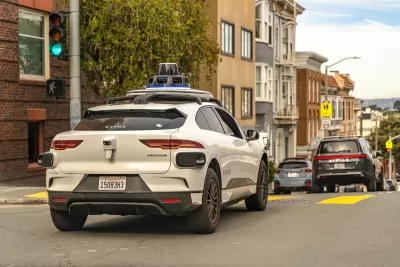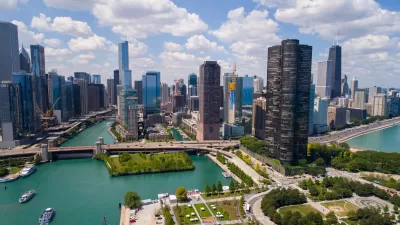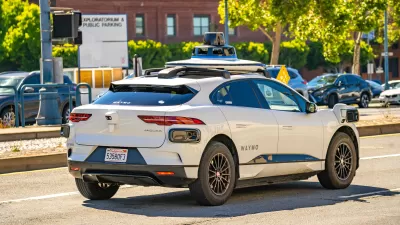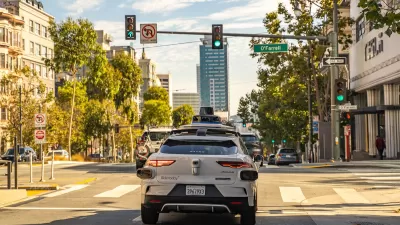One journalist recorded more than a dozen instances of Waymo autonomous cars speeding by when he tried to cross the street.

In a piece for The Washington Post, Geoffrey A. Fowler describes his experience as a pedestrian in San Francisco, where autonomous Waymo taxis are failing to stop for pedestrians in crosswalks.
“When I try to cross my street at a marked crosswalk, the Waymo robotaxis often wouldn’t yield to me. I would step out into the white-striped pavement, look at the Waymo, wait to see whether it’s going to stop — and the car would zip right past,” Fowler writes. In a week, he recorded over a dozen Waymo vehicles that failed to stop when he was crossing a street. Waymo representatives told Fowler that the cars’ software tries to predict whether a pedestrian will really cross. “It’s classic Silicon Valley hubris to assume Waymo’s ability to predict my behavior supersedes a law designed to protect me.”
It is a cautionary tale about how AI, intended to make us more safe, also needs to learn how to coexist with us. The experience has taught my family that the safest place around an autonomous vehicle is inside it, not walking around it.
While human drivers who don’t yield to pedestrians face the risk of a ticket or even jail time, “In California, a computer driver can’t even get a meaningful traffic ticket yet and is certainly not worried about going to jail.” Fowler also notes that cities can empower pedestrians with more safety measures such as flashing lights and signage at crosswalks.
FULL STORY: On roads teeming with robotaxis, crossing the street can be harrowing

Planetizen Federal Action Tracker
A weekly monitor of how Trump’s orders and actions are impacting planners and planning in America.

Walmart Announces Nationwide EV Charging Network
The company plans to install electric car chargers at most of its stores by 2030.

Chicago Approves Green Affordable Housing Plan
The Mayor’s plan calls for creating a nonprofit housing corporation tasked with building affordable housing that meets Green Building standards.

Quantifying Social Infrastructure
New developments have clear rules for ensuring surrounding roads, water, and sewers can handle new users. Why not do the same for community amenities?

Dallas Code Reform Makes Way for Missing Middle Housing
The Dallas City Council voted to change the city’s building code to allow up to eight residential units in three-story buildings.

Mahjong Game Highlights Displacement of Seniors in NYC’s Chinatown
‘Aging Out of Place’ explores the mechanisms that displace vulnerable seniors, and how the community can help preserve key resources and institutions.
Urban Design for Planners 1: Software Tools
This six-course series explores essential urban design concepts using open source software and equips planners with the tools they need to participate fully in the urban design process.
Planning for Universal Design
Learn the tools for implementing Universal Design in planning regulations.
City of Moorpark
City of Tustin
City of Camden Redevelopment Agency
City of Astoria
Transportation Research & Education Center (TREC) at Portland State University
Regional Transportation Commission of Southern Nevada
Toledo-Lucas County Plan Commissions





























